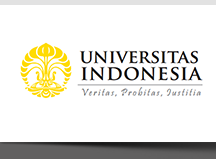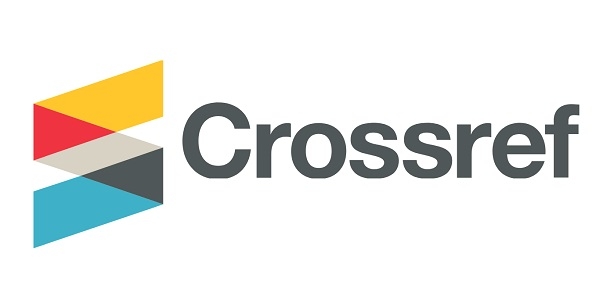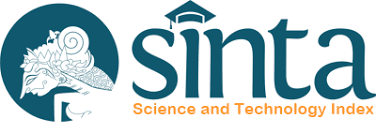Abstract
The Micro and Small Industries (MSIs) sector, part of non-oil and gas processing industry, is a key driver of the Indonesia’s economy. However, in Eastern Indonesia (EI), the number of industries and workers in the MSIs sector does not match the level of output, unlike in Western Indonesia, where the industry is more stable and aligned. This difference is mainly due to variations in technological progress, known as Total Factor Productivity (TFP). This study analyzes TFP in the MSIs sector across provinces in EI from 2013 to 2022 using panel data regression. Results show that South Sulawesi has the highest TFP, while East Nusa Tenggara has the lowest. The study found that the Fixed Effect Model was the best model, with variables like guidance/training, wages, and infrastructure having a significantly positive impact on MSIs’s TFP.
Bahasa Abstract
Industri Mikro dan Kecil (IMK) termasuk dalam industri pengolahan nonmigas dan menjadi penggerak perekonomian Indonesia. Jumlah usaha dan tenaga kerja IMK di Kawasan Timur Indonesia (KTI) tidak selaras dengan tingkat output yang dicapai jika dibandingkan dengan Kawasan Barat Indonesia yang lebih stabil dan sejalan. Kondisi ini disebabkan adanya kemajuan teknologi (Total Factor Productivity/TFP) sehingga penelitian ini bertujuan menganalisis TFP IMK provinsi-provinsi di KTI periode 2013–2022 menggunakan regresi data panel. Hasil penelitian menunjukkan Provinsi Sulawesi Selatan memiliki TFP tertinggi dan Nusa Tenggara Timur (NTT) memiliki TFP rendah. Fixed Effect Model menjadi model regresi data panel yang terpilih dengan variabel bimbingan/pelatihan/penyuluhan, upah, dan infrastruktur berpengaruh positif signifikan terhadap TFP IMK.
References
[1] Amalia, R. (2023). Analisis dampak pertambangan terhadap ekonomi dan lingkungan di Provinsi Papua: (Studi kasus PT Freeport Indonesia). Journal of Economics Development Issues, 6(1), 25-32. doi: https://doi.org/10.33005/jedi.v6i1.154.
[2] Bilan, Y., Mishchuk, H., Roshchyk, I., & Kmecova, I. (2020). An analysis of intellectual potential and its impact on the social and economic development of European countries. Journal of Competitiveness, 12(1), 22-38. doi: 10.7441/joc.2020.01.02.
[3] BPS. (2023). Profil industri mikro dan kecil 2021. Badan Pusat Statistik. Diakses 22 September 2023 dari https://www.bps.go.id/id/publication/2023/04/18/228f9c6242ef5a06b2dc740e/profil-industri-mikro-dan-kecil-2021.html.
[4] Brilyawan, K., & Santosa, P. B. (2021). Pengaruh infrastruktur sosial dan ekonomi terhadap pertumbuhan ekonomi Indonesia tahun 2015-2019. Diponegoro Journal of Economics, 10(1). doi: https://doi.org/10.14710/djoe.29998.
[5] Coelli, T. J., Rao, D. S. P., O’Donnell, C. J., & Battese, G. E. (2005). An introduction to efficiency and productivity analysis (2nd edition). Springer Science+Business Media, Inc.
[6] Firmansyah, A. A., & Muchlisoh, S. (2021). Faktor-faktor yang memengaruhi pendapatan industri mikro kecil di Indonesia tahun 2017-2019: Model spasial Durbin error data panel. Seminar NasionalOfficial Statistics, 2021, 684-694. doi: https://doi.org/10.34123/semnasoffstat.v2021i1.1001.
[7] Gujarati, D. N., & Porter, D. C. (2009). Basic econometrics (5th edition). McGraw-Hill/Irwin.
[8] Hia, V. D. P., Handaka, R. D., & Zega, Y. T. (2021). Pengaruh pembiayaan ultra mikro (UMi) terhadap pertumbuhan ekonomi daerah melalui pertumbuhan produksi industri mikro dan kecil. Indonesian Treasury Review: Jurnal Perbendaharaan, Keuangan Negara dan Kebijakan Publik, 6(1), 75-84. doi: https://doi.org/10.33105/itrev.v6i1.218.
[9] Hidayat, S. (2021). Determinan efisiensi teknis Usaha Mikro Kecil (UMK) menggunakan pendekatan stochastic frontier analysis di Provinsi Banten. Jurnal Lebesgue: Jurnal Ilmiah Pendidikan Matematika, Matematika dan Statistika, 2(1), 45-61. doi: https://doi.org/10.46306/lb.v2i1.55.
[10] Indonesia, R. (2020). Lampiran Peraturan Presiden Republik Indonesia Nomor 18 Tahun 2020 tentang Rencana Pembangunan Jangka Menengah Nasional Tahun 2020-2024.
[11] Isaksson, A. (2007). Determinants of total factor productivity: A literature review. Staff Working Paper, 02/2007. Research and Statistics Branch, United Nations Industrial Development Organization. Diakses 12 Desember 2023 dari https://downloads.unido.org/ot/48/12/4812034/ STATISTICS_WP022007%20-%20Determinants%20of% 20total%20factor%20productivity.pdf.
[12] Kadeni, N. S. (2020). Peran UMKM (Usaha Mikro Kecil Menengah) dalam meningkatkan kesejahteraan masyarakat. Equilibrium: Jurnal Ilmiah Ekonomi dan Pembelajarannya, 8(2), 191-200. doi: https://doi.org/10.25273/equilibrium.v8i2.7118.
[13] Kailthya, S., & Kambhampati, U. (2022). Road to productivity: Effects of roads on total factor productivity in Indian manufacturing. Journal of Comparative Economics, 50(1), 174-195. doi: https://doi.org/10.1016/j.jce.2021.08.001.
[14] Kurniawati, E., & Sugiyanto, C. (2021). Pengaruh struktur umur penduduk terhadap pertumbuhan ekonomi di Indonesia. Jurnal Ekonomi dan Pembangunan Indonesia, 21(1), 41–58. doi: https://doi.org/10.21002/jepi.2021.04.
[15] Ledo, D. (2022). Pengembangan industri kecil untuk pemberdayaan ekonomi rakyat. Rubinstein, 1(1), 19-33. doi: https://doi.org/10.31253/rubin.v1i1.1759.
[16] LPPI & Bank Indonesia. (2015). Profil bisnis Usaha Mikro, Kecil dan Menengah (UMKM). Lembaga Pengembangan Perbankan Indonesia dan Bank Indonesia.
[17] Lubis, S. F., & Lubis, A. F. (2020). Pengaruh pekerja keluarga dan peran inovasi terhadap produktivitas usaha di Indonesia. Jurnal Ekonomi dan Pembangunan Indonesia, 20(1), 111–132. doi: https://doi.org/10.21002/jepi.2020.07.
[18] Mankiw, N. G. (2019). Macroeconomics (10th edition).Worth Publishers.
[19] Pindyck, R. S., & Rubinfeld, D. L. (2013). Microeconomics (8th edition). Pearson Education, Inc.
[20] Puariesthaufani N., A., Pasaribu, S. E., Handayani, D. S., & Patuan, M. (2023). Kajian dampak pelatihan dan pengembangan sumber daya manusia dalam berbagai sektor industri. Journal of Indonesian Social Society (JISS), 1(1), 19-22. doi: https://doi.org/10.59435/jiss.v1i1.26.
[21] Rahmi, J., & Riyanto, R. (2022). Dampak upah minimum terhadap produktivitas tenaga kerja: Studi kasus industri manufaktur Indonesia. Jurnal Ekonomi dan Kebijakan Publik, 13(1), 1-12. doi: http://dx.doi.org/10.22212/jekp.v13i1.2095.
[22] Rakhman, A., Neneng, N., & Saputri, A. (2020). Analisis pengaruh keberadaan pelabuhan terhadap perekonomian di Pulau Sulawesi. Pena Teknik, 5(2), 54-63.
[23] Rostiana, E., Djulius, H., & Sudarjah, G. M. (2022). Total factor productivity calculation of the Indonesian micro and small scale manufacturing industry. Ekuilibrium: Jurnal Ilmiah Bidang Ilmu Ekonomi, 17(1), 54-63.
[24] Sari, L. N. I., & Wulansari, L. (2022). Variabelvariabel yang memengaruhi deindustrialisasi. Seminar Nasional Official Statistics, 2022, 1125-1134. doi: https:// doi.org/10.34123/semnasoffstat.v2022i1.1362.
[25] Setiawan, M., Effendi, N., Heliati, R., & Waskito, A. S. A. (2019). Technical efficiency and its determinants in the Indonesian micro and small enterprises. Journal of Economic Studies, 46(6), 1157-1173. doi: https://doi.org/10.1108/JES-08-2018-0298.
[26] Suginam, S., Rahayu, S., & Purba, E. (2021). Efektivitas penyaluran KUR (Kredit Usaha Rakyat) untuk pengembangan UMKM. Ekonomi, Keuangan, Investasi dan Syariah (EKUITAS), 3(1), 21-28. doi: https://doi.org/10.47065/ekuitas.v3i1.1024.
[27] Syafitri, A., Djulius, H., Priadana, M. S., & Kusdiana, D. (2023). Analysis of labour productivity in micro and small industries in Java. Proceedings of the 6th International Conference of Economics, Business, and Entrepreneurship, ICEBE 2023, 13-14 September 2023, Bandar Lampung, Indonesia. doi: https://doi.org/10.4108/eai.13-9-2023.2341210.
[28] Wang, D., & Sun, Y. (2022). The effect of different government subsidies on total-factor productivity: Evidence from private listed manufacturing enterprises in China. PLoS ONE, 17(1), e0263018. doi: https://doi.org/10.1371/journal.pone.0263018.
Recommended Citation
Manganti, Marella Dea and Budyanra, Budyanra
(2025)
"Total Factor Productivity Industri Mikro dan Kecil di Kawasan Timur Indonesia,"
Jurnal Ekonomi dan Pembangunan Indonesia: Vol. 25:
No.
1, Article 3.
DOI: 10.7454/jepi.v25i1.1621
pp.38-59
Available at:
https://scholarhub.ui.ac.id/jepi/vol25/iss1/3







